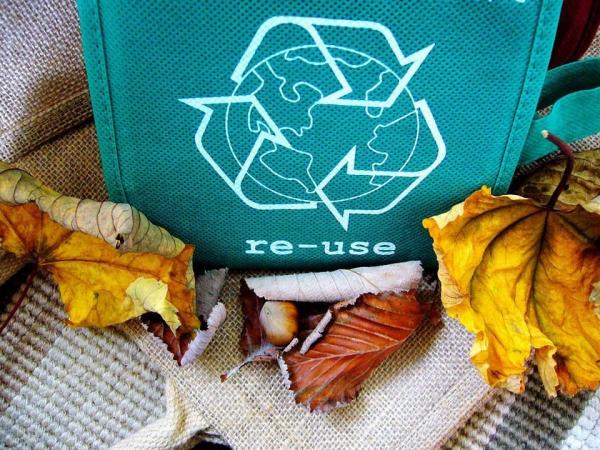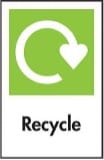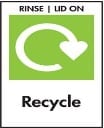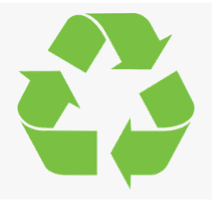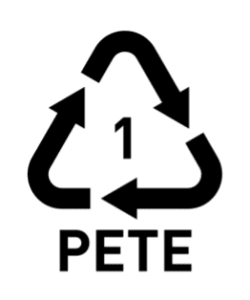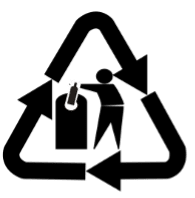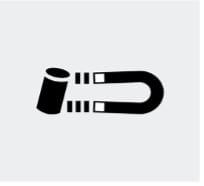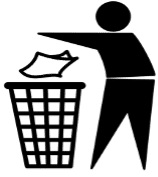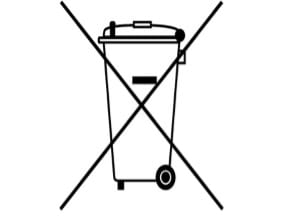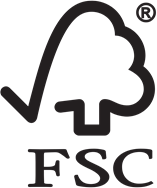In this blog, Bright Green Plastics explains what common recycling symbols mean to help you understand what you need to look out for when recycling your packaging at home.
Household recycling rates may be on the rise, but are the symbols on packaging transparent enough to show us how to correctly and responsibly recycle our waste? We think they deserve an explanation that’s for sure!
Why do we need recycling symbols?
The purpose of the recycling and plastic recycling symbols is to clarify which items can be recycled and which bins they need to go into and to simply understand if they can be recycled at all. If packaging is not recycled correctly, it can sometimes lead to cross-contamination and often results in more waste being produced.
Recycling symbols – Debunked
Many different symbols can appear on your packaging. Sadly only 9% of plastic is recycled (we are working hard to change this), but this means it is more important than ever to understand what these symbols mean and get your waste to the right place!
A study by RECOUP in association with M&S and Plastics Europe found that the general public are still confused by the meaning of the Green Dot Symbol (see below), which may result in packaging being incorrectly recycled.
Yet, when you look down the list of all the symbols, some of them look pretty similar, so it’s easy to see why they are causing confusion.
So, what do the recycling symbols mean?
Recycle – one of the most common symbols. This label represents packaging that is collected by 75% or more of local authorities across the UK, for example, plastic bottles.
Recycle, Rinse – This label represents packaging that needs to be rinsed clean before recycling, such as food trays containing food residue that could contaminate other materials, particularly paper.
Recycle, Rinse, Lid/Cap on – Caps and lids under 40mm in diameter are too small to be captured for recycling. If you see this label, make sure the lid is secured to the bottle.
Don’t Recycle, Remove Sleeve/Film – You may see this request on packaging where film or liners can be easily removed via a perforated strip without needing to use a tool.
The Green Dot – This green dot indicates that the company has made a financial contribution towards the recovery and recycling of packaging in Europe. It does not mean the package or object is actually recyclable.
The Mobius Loop – Quite simply, this indicates that your package is capable of being recycled, not that the object has been recycled or will be accepted in all recycling collection systems. Sometimes it will have a number in the middle to say how much of the packaging has been made from recycled plastic.
Plastic Resin Codes – This identifies the type of resin used to make the item by providing a ‘Resin Identification Code.’ A plastic resin code tells you which type of plastic resin was used to make your product, for example, a plastic bottle. The resin is usually defined between 1-7 (numbers two and five are the main recycled polymers we handle at Bright Green Plastics). The number in between the arrows represents the resin used in the plastic bottles:
1. PET – Polyethylene Terephthalate
2. HDPE – High-Density Polyethylene
3. V/PVC – Vinyl or Polyvinyl Chloride
4. LDPE – Low-Density Polyethylene
5. PP – Polypropylene
6. PS – Polystyrene
7. Other – Anything other than the above
Glass – This symbol is a reminder that your glass packaging can be recycled after use. The easiest way to recycle them is to dispose of them at your local bottle bank.
Recyclable Aluminium – This symbol indicates that the item is made from recyclable aluminium.
Recyclable Steel – This symbol means that the product is made of steel. All local authorities collect steel cans for recycling.
Tidyman – This symbol from ‘Keep Britain Tidy’ asks you not to litter. Nothing to do with recycling, really, but worth keeping him in as he is an important little man with an important message.
Waste Electricals – This symbol explains that you should not place the electrical item in the general waste. Recycling is the safest and most responsible way to dispose of electrical items you no longer need or are beyond repair. By recycling electrical items, you can do your bit to help the environment by preventing hazardous waste from entering landfill.
Compostable – Products certified to be industrially compostable according to the European standard may bear the seedling logo. Never place compostable plastic into the recycling with other plastics as it is designed to break down.
Home composting – In addition to the seedling symbol for industrial composting, you may see this one which means that it is suitable to be home composted.
Paper, card and wood – The Forest Stewardship Council (FSC) logo identifies wood-based products from well-managed forests independently certified in accordance with the rules of the FSC.
Why should we recycle and how do we recycle correctly?
We must always try to recycle and reduce waste as much as we can. If you are really not sure what plastic you can and can’t recycle, recycle it all we say! At Bright Green Plastics, we sort through it, so you don’t have to. This way, you can still do your bit for the environment without the hassle of sorting it out at home. Bright Green Plastics is on a mission to take household plastics, fully recycle this scrap plastic and then supply the recycled plastic to manufacturers in the UK to help create a greener, more sustainable British recycled plastic and manufacturing industry.
Always check the symbols on your packaging (use this guide to help you), and if you get stuck, visit the government website to find out what types of waste are accepted by your local council, which bins to put them in and where recycling centres are located.

